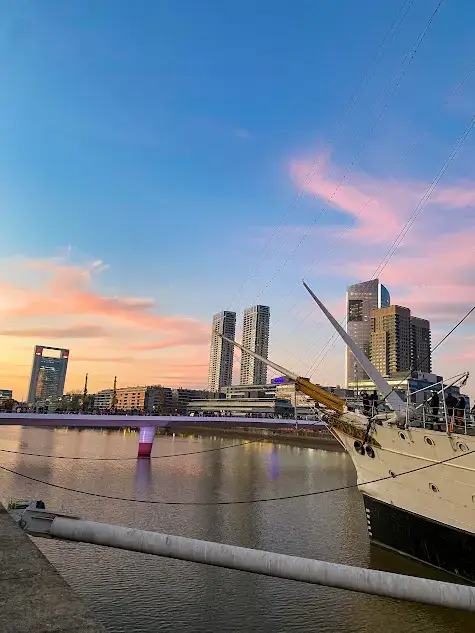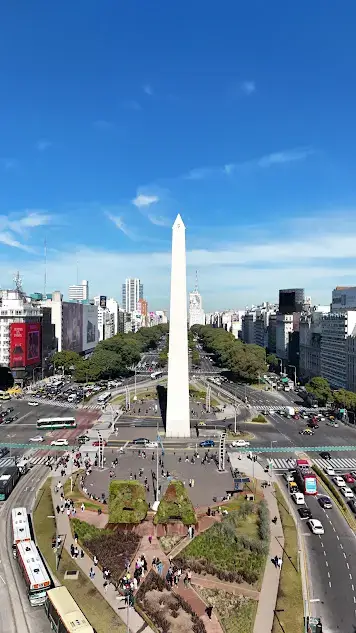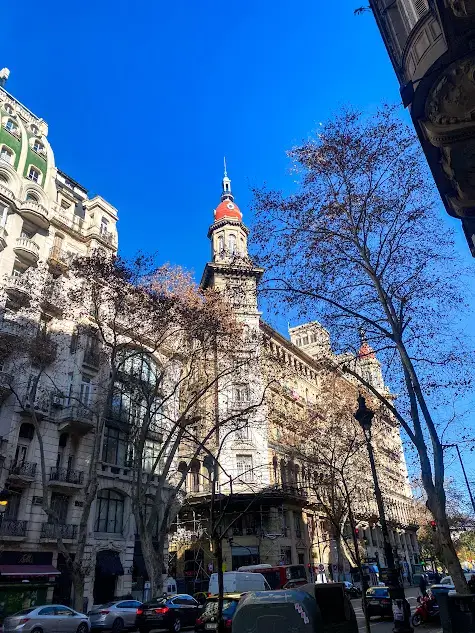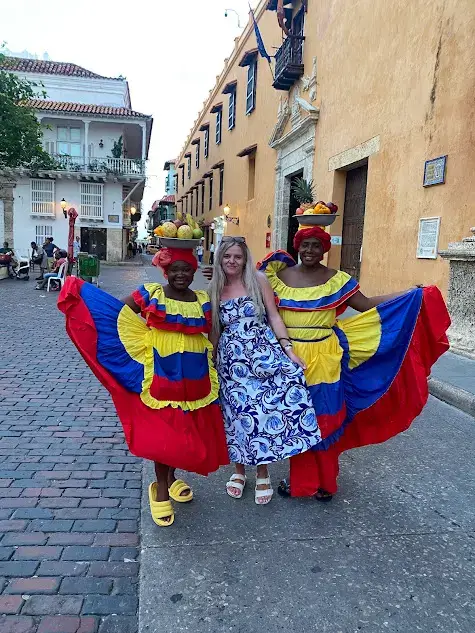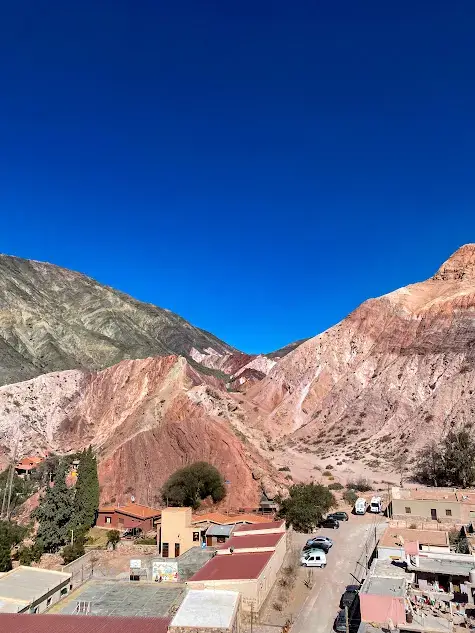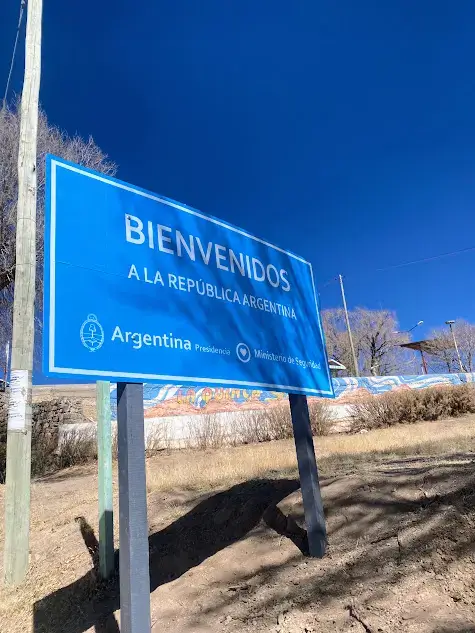Is La Paz Safe? A Complete Guide For Solo Female Travellers 2024
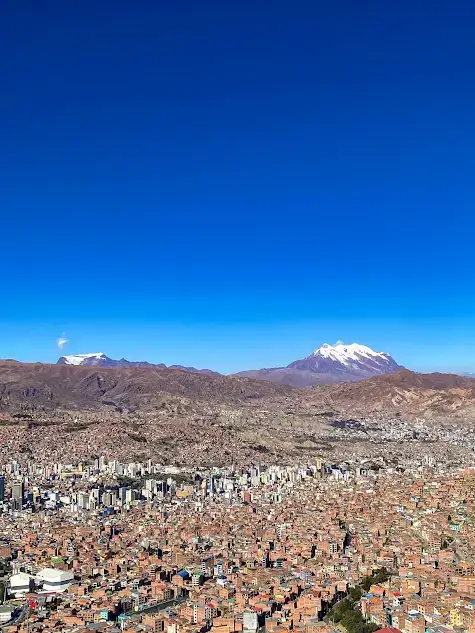
Are you planning a trip to South America and wondering ‘Is La Paz safe for a solo female traveller?‘ Then this guide has you covered.
Wild, wonderful and bizarre. La Paz is a place where chaos transcends throughout the streets. Bustling markets spill over onto the road as you dodge honking cars, erratic bikers and menacing street dogs. La Paz is unique. And it’s a city I really grew to love despite its oddities.
I can say hand on heart I haven’t visited another place like it to date and I don’t think I ever will. The views are breathtaking, quite literally. You’ll be gasping to catch your breath the entire time you’re there.
La Paz is a destination that will test, confuse and fascinate you, all at the same time. Where else will you see dead llama fetuses hung up in the street as you’re tempted by spells and potions?
Bolivia gets a bad rep for being uninviting, cold and unfriendly. Which, is unjustified, Bolivia embraces its authenticity and doesn’t cater to the swarms of tourists that pass through every year.
It stays true to its local customs, spiritual practices and ways of life. If you’re prepared for that, La Paz can be an opportunity to appreciate the rawness of a South American city in all of its grit and glory.
This article will cover everything you should know about safety in La Paz and tips you can use to stay safe in this eccentric city.
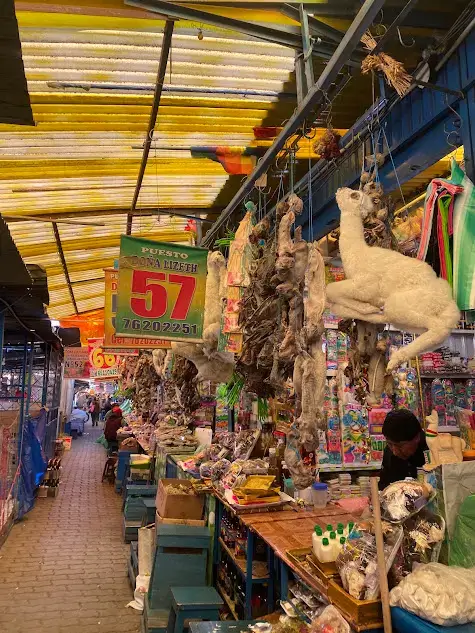
But is La Paz safe for solo female travellers?
Bolivia has faced many significant economic challenges over the years, with many people living below the poverty line. And despite different government and international initiatives that have been implemented, poverty within the country remains a persistent issue.
Like anywhere, where people struggle to meet their basic needs, the risk of crime increases.
And it’s no different in Bolivia. La Paz has the potential to be dangerous, especially if you wander into the wrong areas and don’t take precautions.
But La Paz is a safe destination to travel to for those who stay away from trouble, keep aware of their surroundings and make an effort to embrace the differences in culture.
That said, protests are common and can be disruptive, it’s something you should always pay attention to if you’re travelling to Bolivia. Things can escalate quickly and you should always keep up to date with the latest news and advice.
On the bus to La Paz from Copacabana, I woke up to worried messages asking if I’d seen what was happening in the city. It turns out there had been a coup the day before and the army commander had led a group of soldiers to storm the presidential palace.
The coup wasn’t successful but there were concerns as to whether there would be problems following on from it. Thankfully, the city seemed calm and I didn’t experience any issues. But it just goes to show how quickly things can change.
Consider downloading Google News, you can customize your news feed by location, so you can get the latest updates from specific cities or regions.
How to get to La Paz?
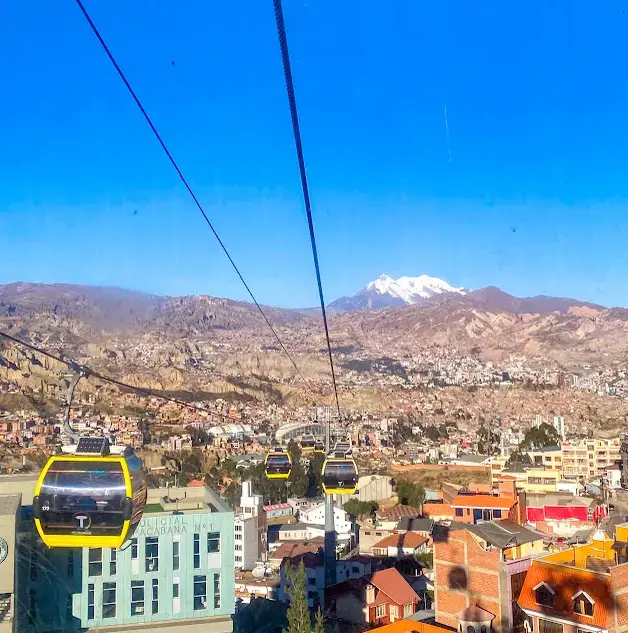
How to get around in La Paz as a solo female?
The best way to get around La Paz is to use the cable car system, Mi Teleferico. It’s also one of the best things to do in La Paz to get some great views of the city and cover as much ground as possible.
With 10 lines connecting La Paz to neighbourhoods in and around the city, it has been revolutionary for the people living there.
You can buy a ticket in the stations for around 3 Bolivianos or a prepaid card for around 30. I’d recommend getting the card if you’ll be in La Paz for a few days.
It’s the quickest and safest way to get around the city, just make sure to grab a map of the lines so you know where you are and where you’re headed.
If you’re travelling between cities, you’ll want to use the bus. Buses in Bolivia are basic but comfortable enough. You can book your bus online at either busbud or ticketsbolivia.
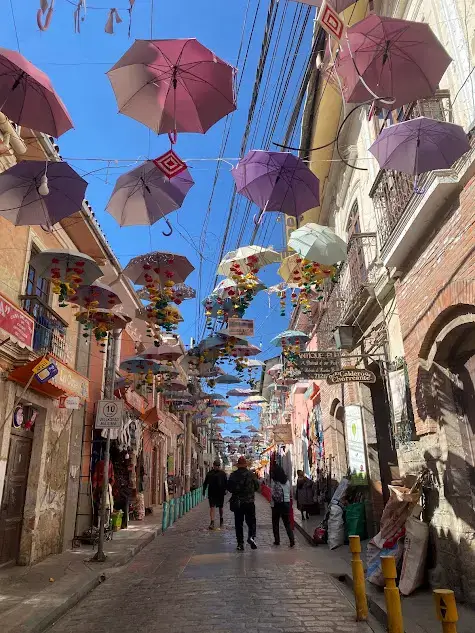
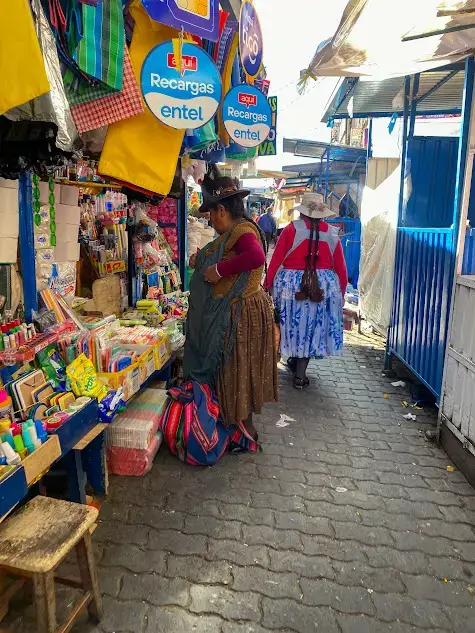
12 Tips to stay safe in La Paz as a solo female traveller
1. Give yourself time to adjust to the altitude
La Paz is situated at an elevation of approximately 3,650 meters (11,975 feet) above sea level. This makes it one of the highest major capitals in the world. And damn do you feel it.
Even coming from Peru and thinking I was adjusted to the altitude by then, I found the never-ending hills in La Paz challengin. It’s easy to spot the tourists there, they’re the ones reaching the top of the hills and panting, one hand on the wall as they desperately try to breathe again.
Allow yourself a few days to adjust, stay hydrated, and avoid strenuous activities immediately upon arrival.
2. Avoid walking alone at night
I’d recommend avoiding walks around La Paz at night. As soon as it gets dark in La Paz, the city can feel much sketchier than some other big cities in South America.
La Paz doesn’t have the same tourist zones as places like Cartagena in Colombia. Which does mean, fewer police patrols. Combine that with dark deserted streets and it’s just not a great idea.
The one night I ventured out for food alone, I admit it made me feel very uneasy. La Paz has many small dimly-lit streets that become pretty much desolate at nightime.
3. Use Reputable Transportation
Drunk drivers can be a concern in Bolivia. If you believe that the driver may be drunk, don’t get in the vehicle. Always try and book with a reputable transport company to minimise the likelihood of this happening.
The cheapest option isn’t always the best safety wise. Trans Copacabana, Todo Tourismo and Bolivar are all considered reputable transport companies. In the city of La Paz, consider using the Puma Kataris buses.
You can book long distance tickets online with ticketsbolivia or busbud. I used both and had no issues. You’ll receive your confirmation and ticket to your email. Buses are basic but do the job. As for the roads, that’s something else. Be prepared for a bumpy ride.
4. Learn some Spanish
English isn’t as widely spoken in Bolivia as other places and you should always make an effort to be able to speak at least a few local phrases of the language.
I don’t remember any of the waiters or taxi drivers speaking English in Bolivia and it’s respectful to them to be able to learn the basics, it’s also a great opportunity to practice your Spanish!
If you’re taking a taxi or using public transport, just being able to explain where you’re going or ask for directions will make your life easier.
5. Be cautious with food and drinks
By the time I reached Bolivia, I’d already met many travellers heeding the warning of food poisoning in Bolivia. The general consensus was that the food in Bolivia wasn’t great and it makes you sick. I never had any problems getting sick, but I definitely took more precautions.
To avoid any food/water related sickness, I’d avoid drinking tap water in Bolivia. I admit I did use it to brush my teeth but anything ice related, salad related or water in a cup related was a big no.
If you’re going to eat out for your meals, I’d recommend avoiding street food in La Paz and eating in restaurants with good reviews.
I’d recommend ‘Oliva’ on Calle Linares, just next to the Witches Market. This was probably the best meal I had in La Paz.
Prevention is better than the cure and I honestly swear by the easy-to-implement precaution of drinking a glass of Coke with every meal.
Now I’m not sure just how related the two are, but I’ve yet to suffer from food poisoning anywhere (touch wood). And this is what I’ve put it down to. So order a Coke with your meal in the name of health.
6. Use licensed taxis or Uber
Uber is available in La Paz but availability can vary and you can be waiting a little while before finding a driver, so make sure to book in advance. The cars themselves are not always the most reliable either.
My Uber to the airport had me questioning howa car could make that much noise, smoke as much as it did and still function.
If you choose to get a street taxi make sure the taxi is properly licensed, cars in La Paz usually have a roof sign or light that clearly identifies them as a taxi. The sign is usually illuminated and displays the word “TAXI. Always make sure you agree on a price before getting in the taxi.
7. Watch out for the street dogs
I’m not going to lie, I’ve turned down a completely different street to avoid gangs of dogs before. Travelling through Central or South America you’ll quickly become accustomed to the number of street dogs roaming about in cities.
But the street dogs in Bolivia are quite literally a different breed, they were way more aggressive. These dogs have no fear. Barking and running next to me was enough to make me change track entirely.
Just keep an eye out and if they look angry, avoid them. You don’t want to find yourself in hospital waiting for a rabies shot.
8. Don’t forget your portable charger
There’s nothing worse than being miles away from your accommodation and seeing your phone on 1%. I’ll admit I’ve been in this situation a couple of times and trying to figure out buses and routes becomes 10 x more challenging.
It’s always better to have a backup if you’re going to be heading off somewhere for the day.
You never know when you’re going to need it.
9. Stick to well-known routes and places
In La Paz it’s best to stick to well-known places and not veer too far from the main tourist areas. But always trust your judgement and the advice from locals/your accommodation.
El Alto is considered a more dangerous area of the city but when I visited I didn’t feel particularly unsafe and I think it would be a shame to miss out on it. The markets sprawl on for what seems like forever and felt way more authentic than the Witches Market in La Paz.
It was by complete chance that I ended up there after unsuccessfully finding a neighbourhood said to be filled with murals. But I was so happy I did, you can walk around the markets for hours and it was great to see a more local side of the city, I didn’t see another tourist the entire time I was there.
You can also get some incredible views from Mirador Killi Killi. With that said, I wouldn’t want to be in this area during the night. If you do decide to visit, visit during the day time and plan to be out before it gets dark.
Stick to the well known areas, but exercise judgement to make sure you don’t miss out on some great spots too.
10. Beware of scams
In Bolivia, like in many other countries, tourists and locals can encounter various scams. Some common scams to watch out for are:
- Scammers may exchange counterfeit Bolivianos or foreign currency, especially in unofficial street exchanges.
- Unlicensed taxi drivers may overcharge you, refuse to use the meter, or take unnecessarily long routes to inflate the fare.
- In markets, bus stations, or festivals, thieves use distraction tactics, such as spilling something on you or creating a commotion, to steal wallets or valuables.
- Thieves sometimes operate on buses, especially during overnight trips. They may steal bags from the overhead compartments or luggage storage.
11. Carry toilet paper.. always
Not so much a safety tip but an important tip nevertheless. Always carry toilet paper. The majority of toilets you use whether they’re public or restaurant bathrooms aren’t going to have toilet paper.
There will sometimes be a woman just sitting waiting with a very generous amount for a fee. But to be prepared, make sure you have your own.
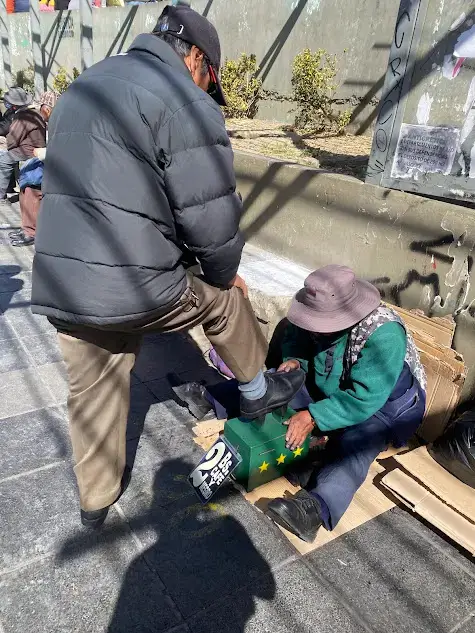
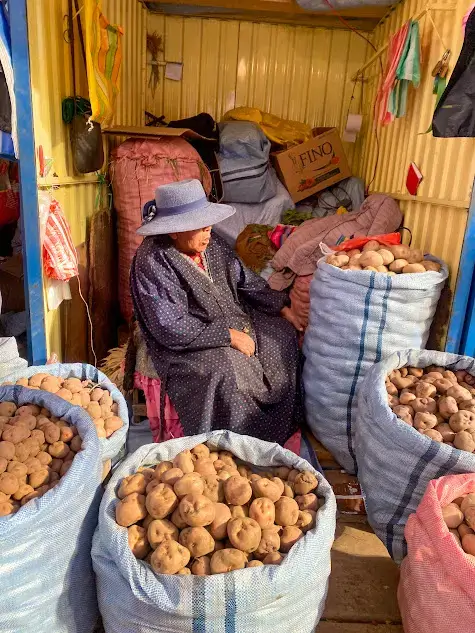
How long to spend in La Paz?
I’d recommend 3 full days to spend in La Paz. This will give you time to adjust to the altitude and give you time to explore the city’s main attractions, like the Witches Market, Plaza Murillo, Valley of the Moon and use Mi Teleferico.
The best apps for staying safe in La Paz
- Google Maps – if you’re going to be visiting La Paz, make sure you have Google Maps downloaded. It’s a lifesaver when you need to get from A to B. You can also download the route you need and use it offline if you don’t have data.
- ESIM – always make sure you have access to data when you’re in a foreign place. Whether you need to get in touch with someone or look something up, having access to information can be quite literally lifesaving. Consider an ESIM to ensure you’re connected as soon as you arrive, you can then top up as and when you need it.
- Uber – you can use Uber in La Paz without a problem. It may take a little while to find a driver but if you book in advance it shouldn’t be a problem.
- Deepl – a great translation app when you need some language assistance. I found this to be a more natural sounding translation too which is better when communicating with the locals.
- Life360 – a great location sharing app that allows you to share your real-time location with family members or friends. It’s a good app to have if you want to keep them updated without having to message to tell them everytime you move.
- TripWhistle – provides the emergency service numbers (police, fire, ambulance) for the country you’re in. It also has the option to share GPS coordinates with emergency responders.
Is La Paz safe? FAQS
Is it safe to go to La Paz at night?
La Paz is a city I would recommend avoiding walking around at night. If possible, try to walk in a group or get a taxi.
Is there unrest in Bolivia ?
The political situation in Bolivia can change rapidly. Major demonstrations, protests, and events can arise suddenly and without much notice. Always keep up to date with the latest news and advisories.
Is La Paz Bolivia safe? A Summary
La Paz is one of the most authentic cities in South America and offers so much in terms of culture, traditions and attractions. While it’s always important to stay aware of your surroundings, La Paz is generally considered safe for solo female travelers.
By staying aware and taking the usual precautions you will have an incredible time in this incredible city.
Other Posts For Solo Females:

